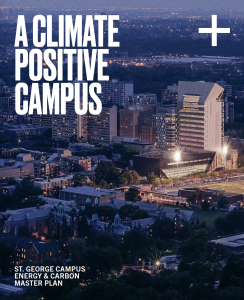Sustainability Office
Your hub for sustainability on the St. George campus.
Transforming our campus
Towards a low-carbon future at U of T St. George
We are committed to taking decisive action on climate change, one of the most pressing challenges of our time.
To achieve a low-carbon future, the St. George campus has set aggressive greenhouse gas reduction targets (scope 1 & 2) based on a 1990 baseline. We will achieve a minimum of 80% reduction in absolute emissions including expected growth, and will not use third party offsets.
Our targets are:
- 37% reduction in green house gas emissions by 2030
- Climate positive by 2050
A climate positive campus
Responsible growth, renewal, and resiliency
The University of Toronto St. George campus will become climate positive by 2050. We commit to reducing more greenhouse gases than we emit, creating a net benefit in our community. Our carbon and energy master plan describes how we will design and build our utility infrastructure to significantly reduce our operating carbon footprint— a critical first step on our path to becoming a climate positive campus.
Low-carbon action plan (2019-24)
Changing how we consume, distribute, and produce energy
In 2019, we launched and began implementing our low-carbon action plan (2019-24). The five-year, tri-campus plan lays out our framework and actions to significantly reduce our greenhouse gas emissions and position us to meet our 2030 reduction target: 37% below 1990 levels. This follows the University’s 2018 decision to join the University Climate Change Coalition.
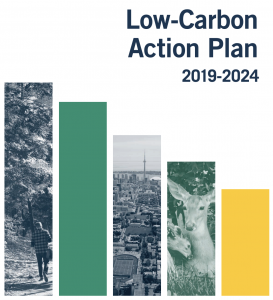

Energy efficiency
We have a long-standing and ongoing commitment to energy efficiency, as we know the best kind of energy is the energy we don’t use. It all started in 1912 when we were one of the first Universities in North America to have its own district energy system, and since then we’ve been busy – eliminating energy waste and making best use of the available energy – we will never stop improving through the ingenuity and hard work of our incredible students, faculty and staff.
Energy management program
Managing the energy we use to run our university is a core principle of what we do. In 1977 we were the first North American University to hire an energy manager, and our diligence in energy management continues across our vast campus – with a focus on reducing energy use intensity at the building level. We rely on proven principles to reduce our energy use – continuous improvement through increased awareness and empowerment, optimization of our existing assets and processes, and implementation of new technologies.
Utility reduction revolving fund
In 2013, the University launched a revolving fund to support and stimulate projects to remove financial impediments. The fund enables utility consumption reduction projects with savings potential over a short-term payback. The model is simple: money is loaned interest free to selected projects. The savings resulting from the project are then used to pay back the loan from the fund. After all funding is returned, the utility savings accrues to the department where the project took place. The revolving fund continues to grow and is a significant lever we use as the University progresses towards its sustainability goals.
District energy system
The University has over a century of innovation with our expansive district energy system – capitalizing on the efficiencies of centralized energy distribution. Our next phase of innovation will leverage the benefits of our distribution network to reduce the use of natural gas through increased electrification, and transition from steam towards low temperature hot water, leveraging geoexchange, thermal storage and energy recovery.
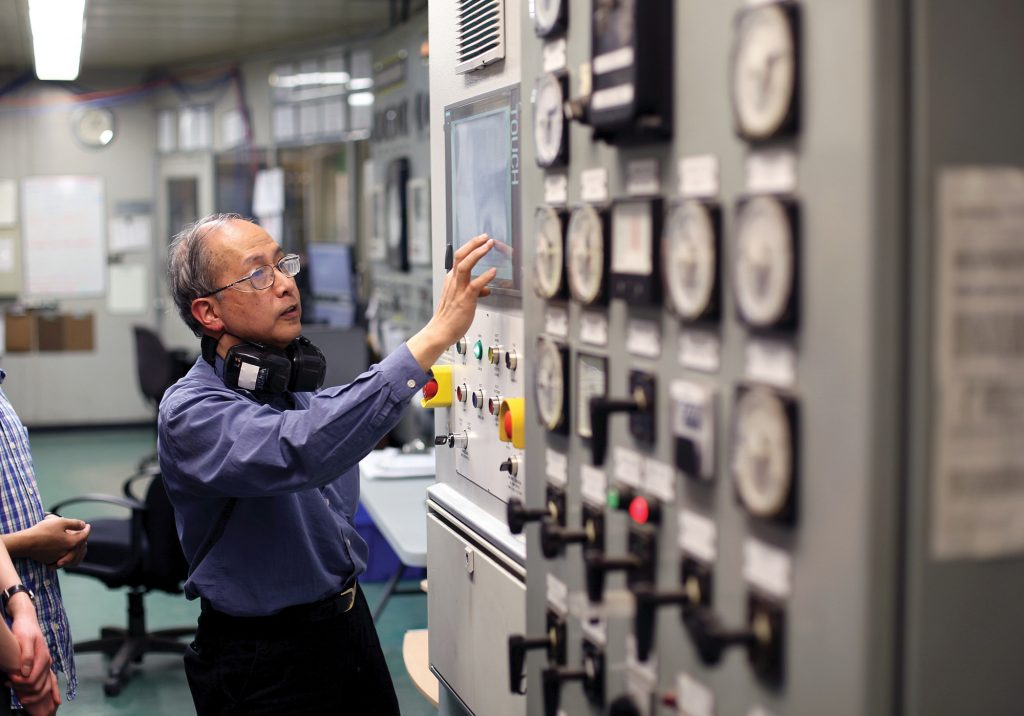
How it works
Wondering how such a district energy system could provide enough energy for a vast campus like St. George? Learn about its mechanisms and advantages in this student-made video that won the 2019 International District Energy Association Student Video Contest.
Canada’s largest urban geoexchange system
The Landmark Project will enable the installation of a massive geothermal field deep under Kings College Circle. This will significantly reduce the University’s greenhouse gas emissions by an estimated 15,000 metric tons per year. In addition, it will revitalize the historic core of the university, transforming the Front Campus into a pedestrian friendly and accessible green space.
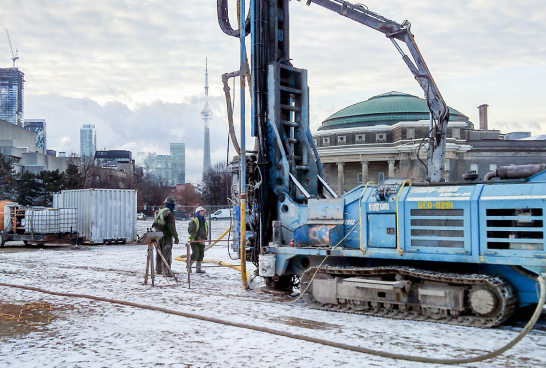
High performance buildings at St. George campus
We are committed to delivering on the tri-campus high-performance building performance standards established by the University of Toronto in 2020. The performance standards ensure that energy performance and sustainability best practices are incorporated into all University buildings. While we continuously work to incorporate sustainability principles across all campus planning, the University also explores and incorporates innovative solutions in deep retrofits of existing historic buildings to become significantly more energy efficient.
Myhal building
The Myhal Centre for Engineering, Innovation, and Entrepreneurship is a unique space that houses a variety of sustainable building innovations. Its rooftop photovoltaic solar panels, rainwater cisterns for irrigation, LED lighting, underfloor distribution ventilation, and many more innovative features make it an impressive, state-of-the-art building. It also taps into the university’s district energy system for heating and cooling, which further reduces emissions and costs. The Myhal Centre is a space that fosters collaboration between researchers, students, industry partners and alumni, creating opportunities for catalyzing innovation.
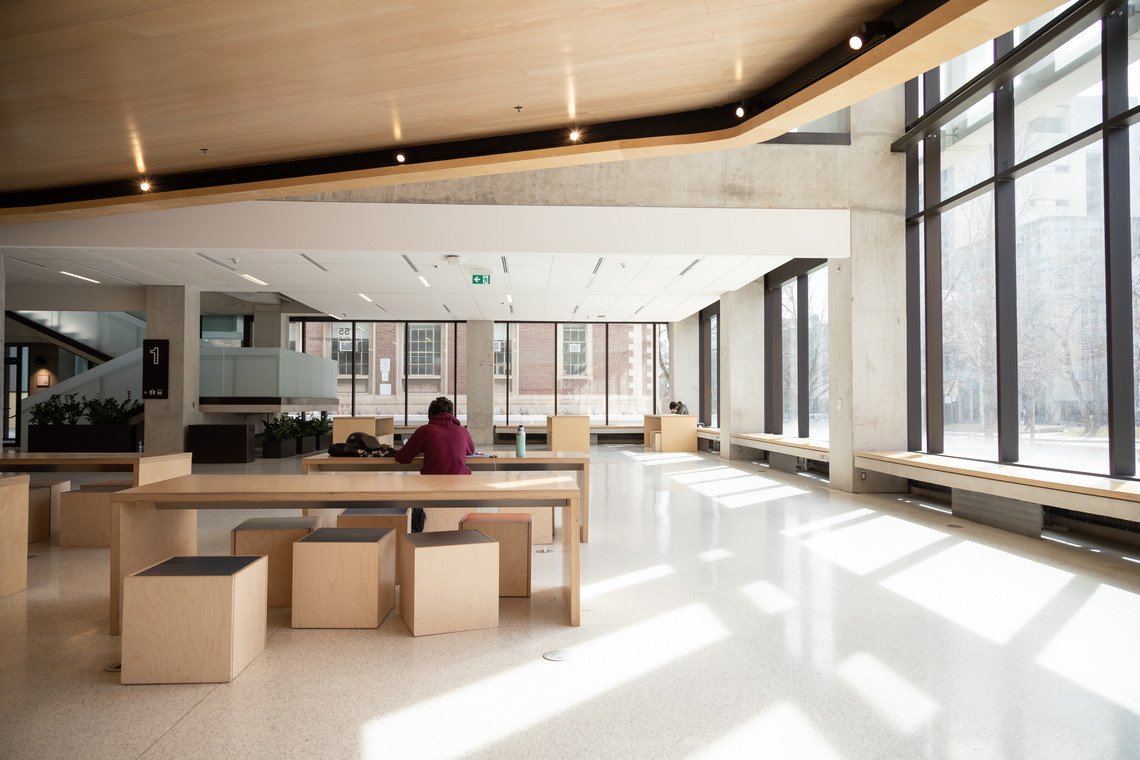
LEED certification
The exam centre on 255 McCaul St. is the first building to achieve the Leadership in Energy and Environmental Design (LEED) Gold Certification at the university. The office showcases many innovative sustainable features such as rainwater harvesting, dimmable high output fluorescent lighting, operable windows, demand control ventilation, and a green wall connected to the lobby air distribution system. The building is also home to the Sustainability Office and the Facilities & Services department.
Other LEED certified buildings include the Rotman School of Management, the Lassonde Mining Building and the Munk School of Global Affairs.
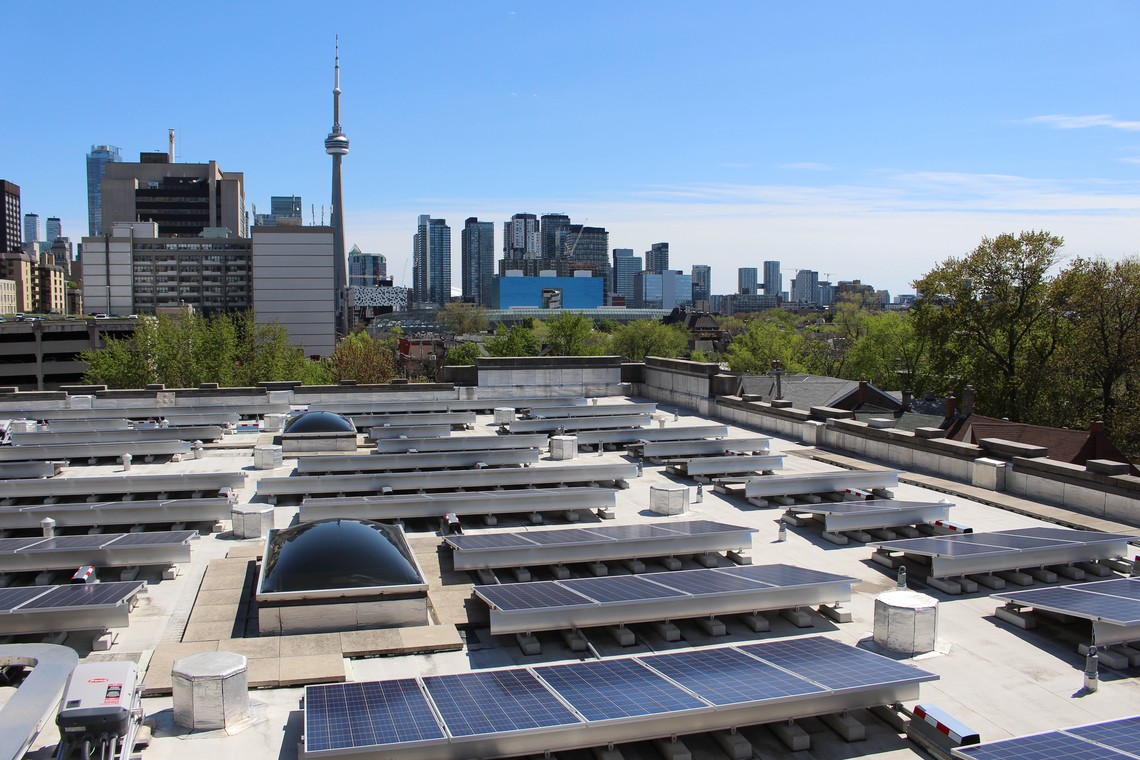
Making transportation more sustainable
Transportation is one of the leading contributors of greenhouse gas emissions worldwide. To actively reduce transportation-related emissions, the University of Toronto strives to promote and improve the accessibility of lower carbon modes of transportation such as public transit and car sharing. The University also works to continuously improve biking and walking infrastructure that facilitates a low- carbon and healthier lifestyle.
Air travel emissions mitigation initiative
We are committed to action on climate change and keeping the University on its’ path to becoming climate positive, all while supporting business travel that cannot be avoided. An institutional plan has been proposed to offset air travel related emissions (scope 3) through University owned greenhouse gas reduction projects.

BikeChain
Bikechain is a not-for-profit cycling organization based out of the St. George campus. This active hub provides DIY workshops, affordable repairs and rental services, as well as unique educational opportunities and a welcoming community of staff and volunteers. Bikechain promotes cycling as an environmentally sound form of alternative transportation and advocates for an active and healthy lifestyle.
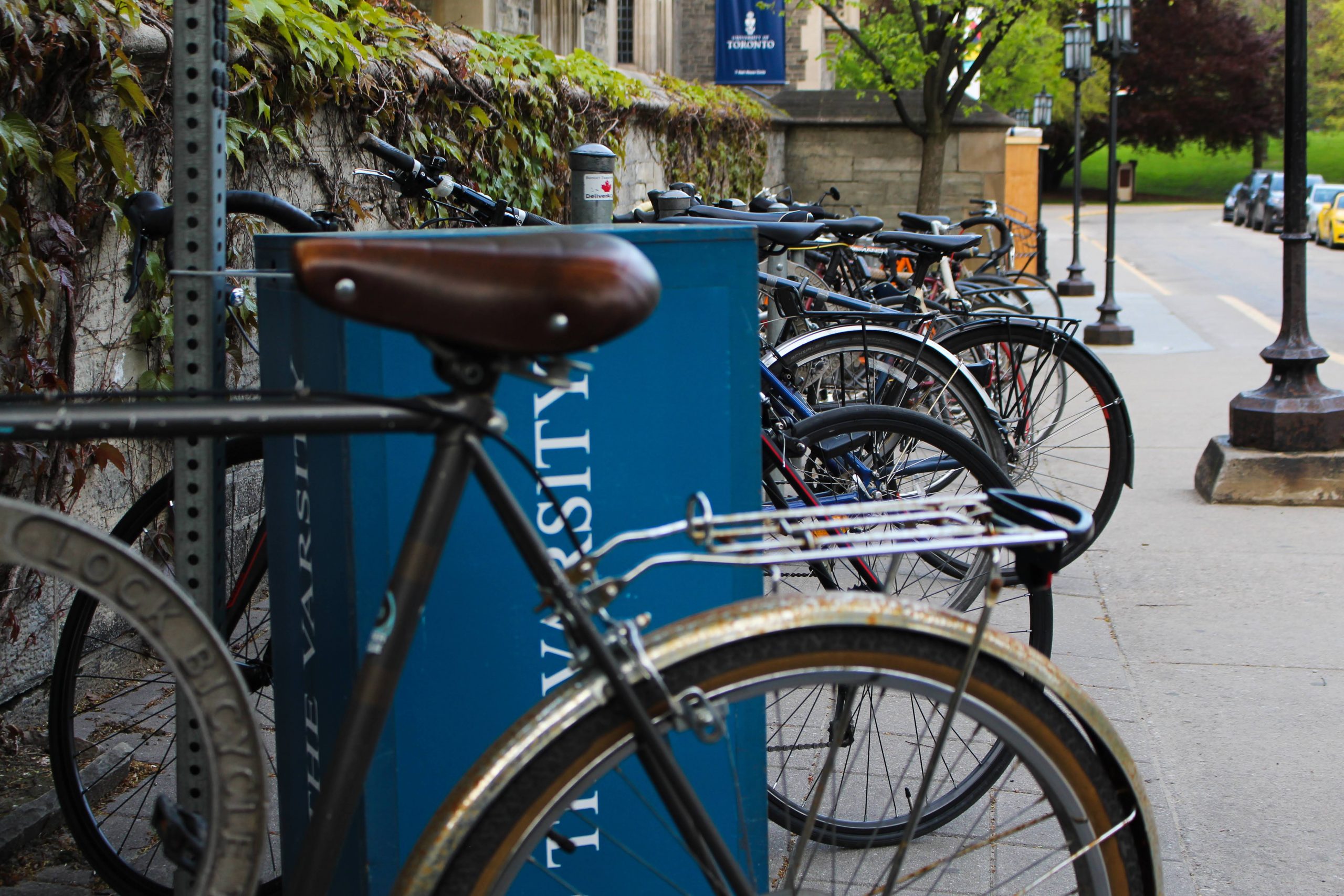
Collaborating for a greater positive impact
We are committed to understanding and reducing our unsustainable practices and realize that we share similar challenges with those outside our institution. Collaboration offers a huge opportunity to influence and work together to accelerate positive change.
Green will initiative
The City of Toronto Green Will Initiative seeks to accelerate greenhouse gas emissions reductions by improving the energy efficiency of public and private-owned buildings across Toronto. As one of Toronto’s largest property owners and managers, the University has signed on to form the first cohort, targeting pathways to building net-zero emissions.
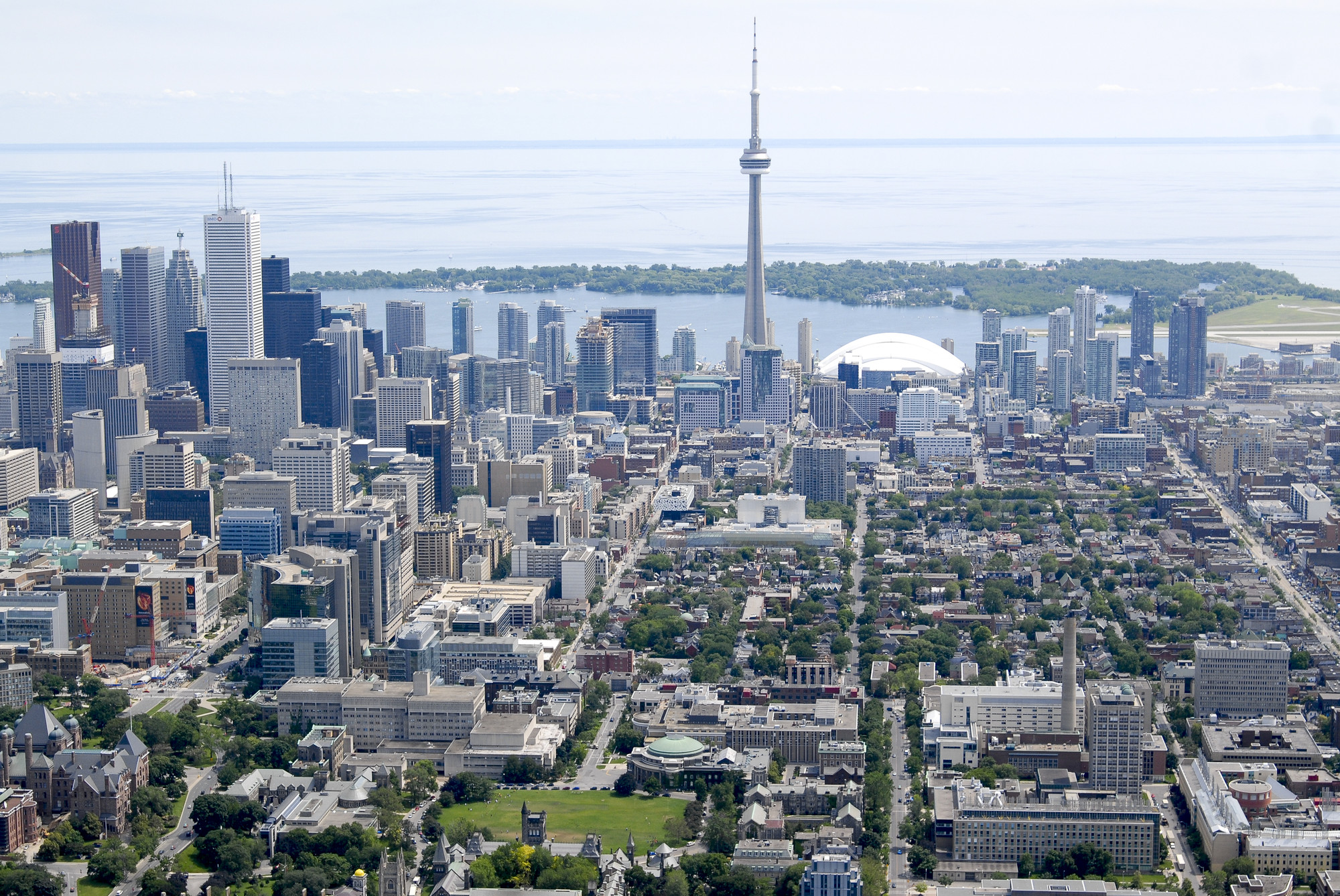
University climate change coalition (UC3)
In 2018, the University joined other North American research universities committed to climate action and cross-sector collaboration, UC3 is a collaborative coalition that leverages relationships and expertise to accelerate local climate solutions and build community resilience.

Alliance of world universities (U7)
In 2019, the University joined the U7 Alliance, an international alliance of university presidents who engage both in discussion and in concrete action by making commitments that universities may take to address the most pressing global challenges in a multilateral context. It is the very first alliance of university presidents aimed at structuring and advancing their role as global actors across the multilateral agenda.

Our sustainability partners

